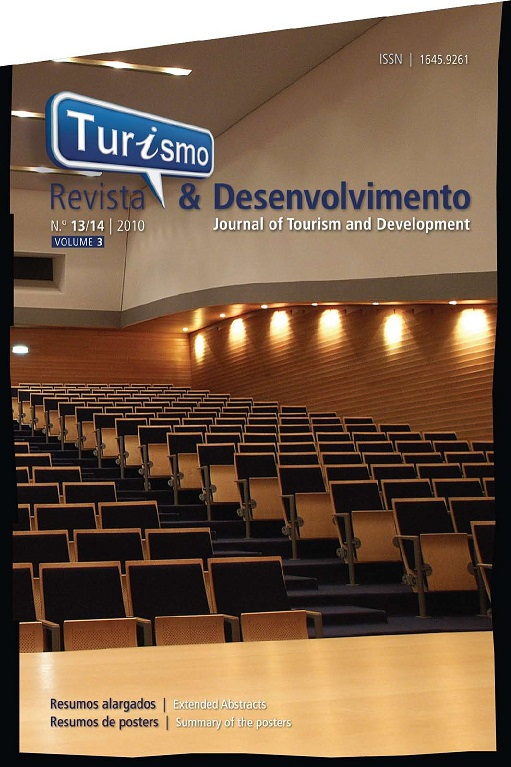Does human resource management (HRM) really matter in tourism organizations?
Resumo
Objectives | The HRM function has changed dramatically in the last three decades, from a purely administrative small service, to a strong strategic department in the organization. Notwithstanding this noble role for the HR function, it has not yet been theoretically and practically established that the HR function has an impact on performance. Bowen and Ostroff (2004) aim to shed light on such problem; they introduced a novel concept, HR Strength, to indicate the degree to which messages regarding what are the appropriate behaviours in the organization, are communicated to employees in a distinctive, consistent, and consensual way. Each of these dimensions is in its turn divided into nine attributes. The goal of the current research is to understand how Portugal’s main hotel chains evaluate the HR function, and how do they assess the link between the HR function and the hotel strategy. This study has significant practical relevance as well, since tourism is a key economic activity in the country.
Methodology | Since this was an explorative research, a qualitative approach was followed. A semi-structured interview was used to collect data. Informants were HR directors from seven main hotel chains in the country.The interview questions were built based on the 3 dimensions and the 9 attributes as defined by Bowen and Ostroff (2004); they were tested with seven HR directors, albeit in companies operating in distinct industries.
Main results and contributions | Content analysis was performed to search for common themes across the seven interviews. Descriptive analysis of the data followed closely the theoretical structure of Bowen and Ostroff’s (2004) dimensions and attributes. Likewise, results are presented according to this structure. Distinctiveness This first dimension comprised 4 attributes:visibility, understandability, legitimacy of authority, and relevance. As far as the first attribute is concerned, five interviewees believe that the HR function in their hotels isvisible,whereas two refer that the HR function only recently has started to become noticed by employees. In relation to understandability, there seems to be unanimous to consider the HR function as subject to distinct interpretations (five out of seven cases); the most visible and transparent HR practices are training and communication, and at the opposite side lay careers, bonuses, and incentives. All interviewees associate legitimacy of authority of the HR function to two aspects: the degree to which the HR function brings benefits to employees, and the degree to which the HR function helps in solving people’s problems. Finally, five of the seven interviews think that HRM is highly relevant in the organization, namely to help attaining the company’s goals, but also its strategy and its mission. Consistency It has three attributes: instrumentality, validity, and consistency of HR messages. With regard to the first one, the interviewees agreed that the hotel’s strategy and its HR function are clearly aligned and tuned, and that if that does not happen, the HR function will be the first one to suffer. Concerning validity, all informants pointed out a few discrepancies between what is defended in their organizations and what is done in practice. Furthermore, this is a problem with which all HR directors are deeply devoted to resolve. They do this working at the communication level between employees and their direct supervisors. With reference to consistency of messages, there is a personal commitment to communicating consistent and congruent messages across time and across all levels of the organization. The last dimension is composed of only two attributes: agreement between HR message senders, and justice. Across all interviews, words such as alignment, common orientations, and the like, were repeatedly declared by the directors. However, they recognise that sometimes not all departments agree upon strategic goals, HR practices, and performance goals. Finally, all hotels recognise the utter importance of fair and transparent processes, although they also point to the difficulty of developing them.
Limitations | The main limitation of the work is due to the fact that it is not possible from this research,make inferences to the total number of hotels in Portugal. The smaller enterprises tend to adopt a less professional management. Thus, independent hotels, or those who are not connected to a hotel chain, they probably have less structured processes for human resource management, this means that a sample of seven hotel chains may not reflect the reality of others.
Conclusions | Content analysis allowed delving into the HR function in some of themost important hotelchains operating in Portugal. This research identified a few problems facing by the hotels, as far as the HR function is concerned:
– Despite their visibility, not all HR practices are fully understood by all employees;
– What the HR function proclaims and what it does, is not always consistent;
– Agreement amongst the various Departments in the hotel, as far as several HR instruments, is not always attained;
– Rewards and recognition as perceived by employees is often a problem: people not always recognise that rewards are a function of their productivity.





